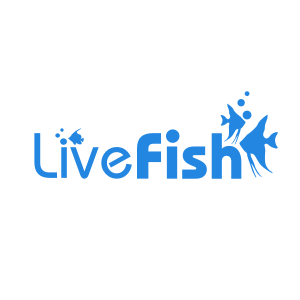Chocolate Tang MED
The Chocolate Tang is an excellent choice for an aquarium not only due to it being one of the easiest tangs to maintain but also the dramatic transformation as it changes from juvenile to adult. As adults, these fish have disc-shaped yellow to dark brown and purple bodies with an intense orange patch located on their chest area. A dark band outlines the bottom half of its face and its tail is fringed with yellow. As juveniles, the coloration varies dramatically. They will mimic the coloring and markings of nearby dwarf angelfish which is thought to help protect them from predators. It also allows them to feed closer to territorial damselfish who seem to tolerate an angelfish's presence better than the tang's.
Chocolate Tang
As adults, these fish have disc-shaped yellow to dark brown and purple bodies with an intense orange patch located on their chest area. A dark band outlines the bottom half of its face and its tail is fringed with yellow. As juveniles, the colouration varies dramatically. They will mimic the colouring and markings of nearby dwarf angelfish which is thought to help protect them from predators. It also allows them to feed closer to territorial damselfish who seem to tolerate an angelfish's presence better than the tang's.
It is extremely difficult to differentiate between the sexes of this species. There has been no known success attempting to breed them in captivity but some spawning has been noticed in public aquariums.
This species of tang is originally found all over the Indo-Pacific area and can be frequently seen in Seychelles, Japan and even Tuamotu. The adults will enjoy life on their own around shallow lagoons and reef slopes that offer plenty of rock, coral and sand around the bottom. They have been seen at depths of up to 60 metres. The juveniles on the other hand will form small groups which offer protection when venturing out of hiding to feed.
Tank Recommendations for the Chocolate Tang
The smallest tank size for this species of tang is 280 litres as even though they are relatively small they still need lots of wide open swimming space. Enough rocks and coral areas that will provide safe zones for hiding and sleeping at night are essential. At least one area of the tank should have strong water movement as these guys love well-oxygenated water and the feeling of it running through their gills. They will thrive in both a fish only and reef aquarium setting and will graze on algae so the live rock would be a perfect choice.
Suitable Tank Buddies
These are some of the more peaceful species of tang available and multiple juveniles can be kept together for a while. However, they will need to be separated soon as when the tangs grow older they will show signs of aggression to other tangs. They will do fine with other large more aggressive species.
Usually Compatible
Filefish, Groupers and Grunts would make great additions as tank buddies. Other excellent choices could include Boxfish, Angelfish and Frogfish. The Chocolate Tang will also get along fine with Lionfish, Pufferfish and Parrotfish.
Sometime Compatible
Watch out for signs of bullying if keeping with Triggerfish, Butterflyfish and Cardinalfish. Rays and Batfish should also have a close eye kept on them if housing with the Chocolate Tang. As with most species of surgeonfish, they will be aggressive and fight with other members of the same family.
Rarely Compatible
Seahorses and Pipefish will more than likely be too docile and frightened to venture out and eat with the presence of a tang in the tank so are best avoided. Sharks would make a horrible choice of tank buddy and will normally eat the tang the first chance it gets.
Feeding Your Chocolate Tang
These fish are omnivorous but will live primarily as herbivores and as such will thrive on a varied diet consisting of vegetable matter. They are constant eaters and will actively graze in a tank that provides plenty of algae. They do however need some meaty foods so also provide small amounts of mysis and/or brine shrimp and flake foods occasionally. If insufficient algae growth isn't maintained dried sheets of nori seaweed may be fixed to a rock or glass.
| Scientific Name | Acanthurus Pyroferus |
|---|---|
| Care Level | Moderate |
| Common Names | The Chocolate Tang is also known as the Mimic Tang. |
| Diet | Omnivore |
| Fish Family | Acanthuridae |
| Lifespan (years) | 30 |
| Max. Length (cm) | 26 |
| Min. Tank Volume (l) | 280 |
| Origin | Indo-Pacific |
| Reef Safe | Yes |
| Sociability | Semi-aggressive |
| Venomous | No |
| Water Conditions | 26-28° C (78-82° F), dKH 8-12, pH 8.0-8.4, sg 1.024-1.026 |



